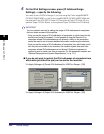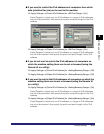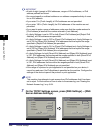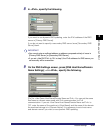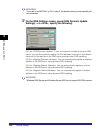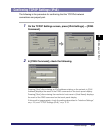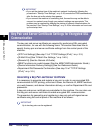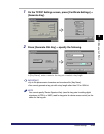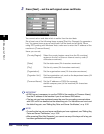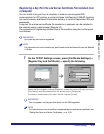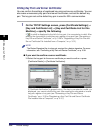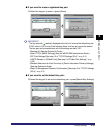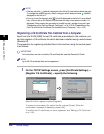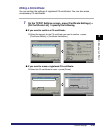
Protocol Settings
3-28
3
Using a TCP/IP Network
IMPORTANT
•
If you set the startup time of the machine's network functions by following the
procedure in "Startup Time Settings," on p. 3-43, execute the PING command only
after the time set as the startup time passes.
•
If you connect the machine to a switching hub, the machine may not be able to
connect to a network even though your network settings are appropriate. This
problem may be resolved by delaying the startup of network communications for
the machine. See "Startup Time Settings," on p. 3-43 for information on how to set
up the startup time.
Key Pair and Server Certificate Settings for Encrypted SSL
Communication
The key pair and server certificate are required for performing SSL encrypted
communication, for use with the following items. This section describes how to
specify the key pair and server certificate settings from the control panel of the
machine.
• [IPP Print Settings] (See step 13 of "TCP/IP Settings (IPv4)," on p. 3-3.)
• [E-Mail/I-Fax] (See "E-Mail/I-Fax Settings," on p. 3-40.)
• [Remote UI] (See the Remote UI Guide.)
• MEAP functions via a web browser (See the MEAP SMS Administrator Guide.)
• [Device Information Delivery Settings] (See the Reference Guide.)
• Department IDs/Passwords Confirmation (See step 19 of "TCP/IP Settings
(IPv4)," on p. 3-3.)
Generating a Key Pair and Server Certificate
It is necessary to generate and register a key pair in order to use encrypted SSL
communication for IPP printing, e-mail and I-faxes, the Remote UI, MEAP functions
via a web browser, and device information delivery, or confirm Department IDs and
passwords.
A key pair and server certificate are preinstalled in the machine. You can also use
this key pair and server certificate to enable encrypted SSL communication.
The procedure for generating and registering a key pair and self-signed server
certificate using the control panel of the machine is as follows:
IMPORTANT
Up to two key pairs can be registered.





